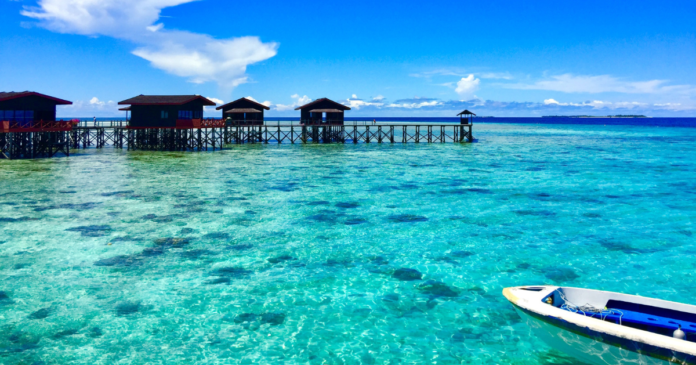Thinking about when is the best time to visit Malaysia? Well, it’s kind of like asking when’s the best time for pizza-all the time! But since Malaysia doesn’t come with 24-hour delivery, let’s dive into when you should really pack those bags. Whether you want to avoid the rain, enjoy the best festivals, or not melt into a puddle of sweat, I got you. Ready to plan your perfect Malaysian adventure? Let’s time it just right!
Malaysia is a beautiful country with a rich cultural background, beautiful sceneries, and diverse attractions. From the eleventh-hour night city of Kuala Lumpur to the sun-baked beaches in Langkawi down to the cool highlands of Cameron, Malaysia has a destination for every different taste. However owing to its tropical climate, choosing the best time to visit Malaysia can be tricky. This guide will help you to decide when is the best time to plan a trip according to weather, events, and what activity you will want to enjoy.
Understanding Malaysian Climate
Malaysia has come to be divided into two main regions which are West Malaysia also known as Peninsular Malaysia and East Malaysia, which is on the island of Borneo. Even though their climatic condition will be tropical for both regions, there is a slight variation in weather experienced within these regions because of their various locations. In Malaysia, the weather is largely influenced by the two monsoon seasons known as the Southwest Monsoon and the Northeast Monsoon.
Whereas Peninsular Malaysia, which includes popular destinations such as Kuala Lumpur, Penang, and the Cameron Highlands, receives reasonably consistent rainfall throughout the year, East Malaysia, home to destinations like Sabah and Sarawak, shows a somewhat greater influence exerted by the monsoons.
When making plans, keep in mind that there are two main seasons in Malaysia:
- Dry Season: November to March
- Wet Season: April to October
Each season offers its own special experiences, so let’s dive deeper into the best time to go based on what type of traveler you are and what you’re looking for.
Best Time to Visit Malaysia for Great Weather: November to March
The best period is from November to March, during which Malaysia experiences dry weather conditions. During these months, it maintains a balance in temperature between 25°C to 32°C; hence, it is ideal for sightseeing, going to beaches, and nature trips. This is even more perfect on the west coast of Malaysia, and some of the important favorite spots are Kuala Lumpur, Penang, and Langkawi.
In Kuala Lumpur, the dry season means a time of clear skies and warm temperatures, and it is the best time to visit iconic attractions like the Petronas Twin Towers, Batu Caves, and Central Market. Then there is Penang, with its city of colonial architecture and street food, feeling also at its best during this period. Langkawi boasts an array of pristine beaches, turquoise waters, and breathtakingly beautiful landscapes that make the dry months the height of the beach season.
The east coast of Malaysia, however, gets heavier rain during the Northeast Monsoon from November to March. If considering visiting the eastern islands of Malaysia, including Terengganu, Redang, or Tioman Island for scuba diving or snorkeling, it is best to avoid this time of the year, as the monsoon season closes a large number of resorts.
Meanwhile, for travelers combining cultural experiences with perfect weather, November to March is also an excellent time to catch some of Malaysia’s biggest festivals. The most colorful event in Malaysia is traditionally Chinese New Year, which falls in January or February. The streets turn alive with dragon dances, lanterns, and fireworks-all this combining to offer an exciting cultural experience.
Best Season for Nature Lovers: March to October
For the nature, wildlife, and trekking enthusiast, March to October is an ideal period to come to Malaysia, especially so in regions like Sabah, Sarawak, and the Cameron Highlands. This period is somewhat parallel with the rainy season for Peninsular Malaysia, but most of the time, the rain does not last too long.
March to October is the ideal time of year to visit Malaysia’s highlands, such as the Cameron Highlands. Throughout the year, the highlands maintain a cool climate that many enjoy as an escape from the tropical weather. You will be able to hike through mossy forests, stroll through the lush tea plantations, and visit strawberry farms during this time. The cooler environment is better for outdoors and the rains help keep everything very green.
Equally, during this season, East Malaysia, especially Sabah and Sarawak, turns into a haven for nature lovers. Native to some of the most ancient rainforests and extremely rich in rare wildlife and stunning landscapes, Borneo offers good opportunities to trek in Kinabalu National Park between March and October. It feels quite rewarding to be able to spot orangutans in the open and explore the caves of Mulu in Sarawak.
Although the wet season does not sound very appealing, it has to be mentioned that the rain usually makes Malaysia’s rainforests and waterfalls appear nicer. Waterfalls in places such as Taman Negara National Park and the Perhentian Islands are quite beautiful during the rainy season.
Best Time for Beach Lovers: West Coast: November to March, East Coast: May to September
But then again, when it comes to beaches, Malaysia is paradise. The best time to go, however, depends on which coast one may be visiting. The west coast and the east coast of the country are the two main destinations for beach lovers in Malaysia, yet their respective best weather conditions are different.
The west coast of Malaysia, which includes Langkawi, Penang, and Pangkor Island, experiences the best beach weather from November to March during the dry season. Sunny skies and calm waves make it the ideal time for swimming, sunbathing, and water sports. With its crystal-clear emerald waves lapping against pristine white sand beaches and opulent resorts, Langkawi is an especially well-liked beach destination during these months.
On the other hand, the east coast of Malaysia-for example, Perhentian Islands, Redang Island, and Tioman Island-has its optimal beach weather between May and September. These months are the best time to snorkel, dive in its crystal-clear waters, or get involved with any kind of water activity. The visibility for diving is great, and the sea life during this period is abundant. The East Coast is indeed bashed severely by the Northeast Monsoon, so it should be better to avoid the East Coast islands between November and March; this time sees the closure of many resorts.
For those beach lovers who want to explore both coasts, it is a good idea to spend your time on the west coast from November to March and the east coast during the mid-year months of May to September.
Best Time for Festivals and Events
Malaysia is a melting pot of cultures. Festivals are therefore one of the reflections of such diversity. If one wishes to immerse in most of Malaysia’s vibrant cultural celebrations, it pays to plan your trip around key festivals.
Chinese New Year usually falls in January or February and is one of the most widespread celebrations in Malaysia. It’s a time to celebrate, with lion dances, vibrant processions, and fireworks lighting up the night sky. The best cities to feel the pulse of the Chinese New Year are Kuala Lumpur, Penang, and Malacca, where you get to catch all the action of this festive day.
Another important occasion in Malaysia is Hari Raya Aidilfitri, which means a celebration to end the fasting month of Ramadan. It usually falls in May or June every year, the time for feasting, reunion with family, and open houses. This may be a joyous occasion, but on the contrary, some places may be closed down for the holidays, so your plan should be routed accordingly.
The Hindu festival of lights, Deepavali, takes place in October or November. The streets wear a kaleidoscope of colors with vibrant lights and flowers, and temples buzz with activity due to special prayers and offerings. One of the best places to experience the festivities is Kuala Lumpur’s Little India.
Pesta Ka’amatan in Sabah, celebrated in May, and Gawai Festival in Sarawak, celebrated in June, are two different cultural events with a range of experiences in the indigenous heritage of East Malaysia. Traditional music and dancing accompany feasts that allow one to have the most unique opportunity to experience the local culture.
Best Time to Visit Malaysia Avoid the Crowds

To get around the peak tourist season, considering this is when most of the tourists arrive, you head to Malaysia during the shoulder months of April, May, September, and October. These months fall between the two monsoon seasons, offering great weather without the crowds.
April and May are also good months to visit western Malaysia, as the weather is still fairly dry, and it’s less crowded than during the peak months. You will almost have all the famous destinations for yourself, like Langkawi, Penang, and Cameron Highlands, without queues and crowds.
On the East Coast, the months of September and October are usually quieter. This is highly appropriate for those who would want to visit beautiful beaches and islands without the hustle and bustle that usually characterizes high season. For these months, the weather is generally nice, and you will enjoy your trip better because it is easy to get around, and have a greater appreciation for what you see.
Conclusion
The temperature of Malaysia is more or less even throughout the year, so the best time to visit Malaysia really depends on what you want to experience. If you are a beach lover, the best time to fly for western beaches is during the dry season, from November to March. From May to September, the east coast beaches are at their best. Nature lovers also have their high season between March to October: these times are ideal for trekking, hiking, and exploring the rainforests.
Cultural travelers would want to visit during major festivals like Chinese New Year, Hari Raya Aidilfitri, and Deepavali for an experience of some of Malaysia’s rich traditions. Whatever the time you travel, Malaysia’s dramatic landscapes, ebullient culture, and warm hospitality will make the journey a lifetime experience.




